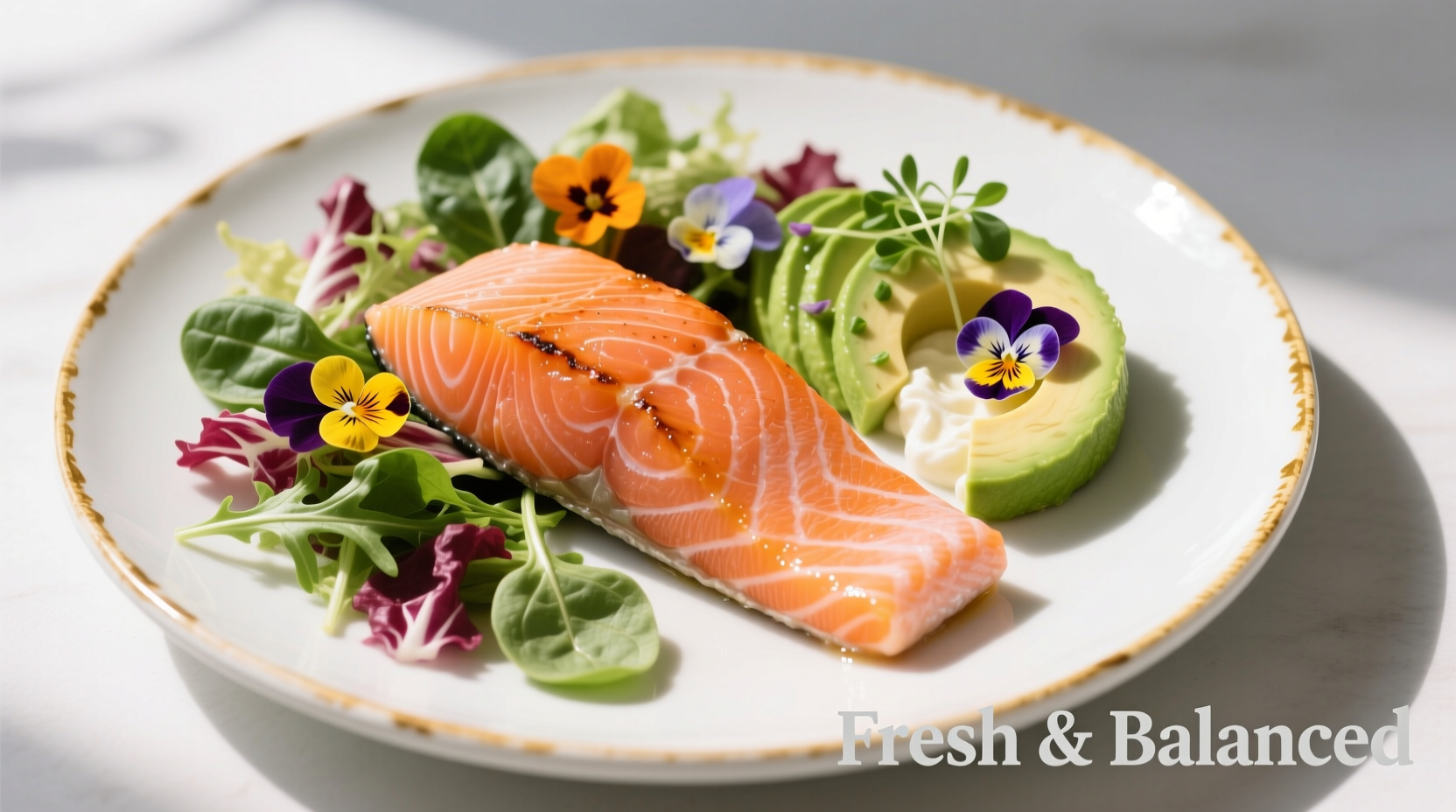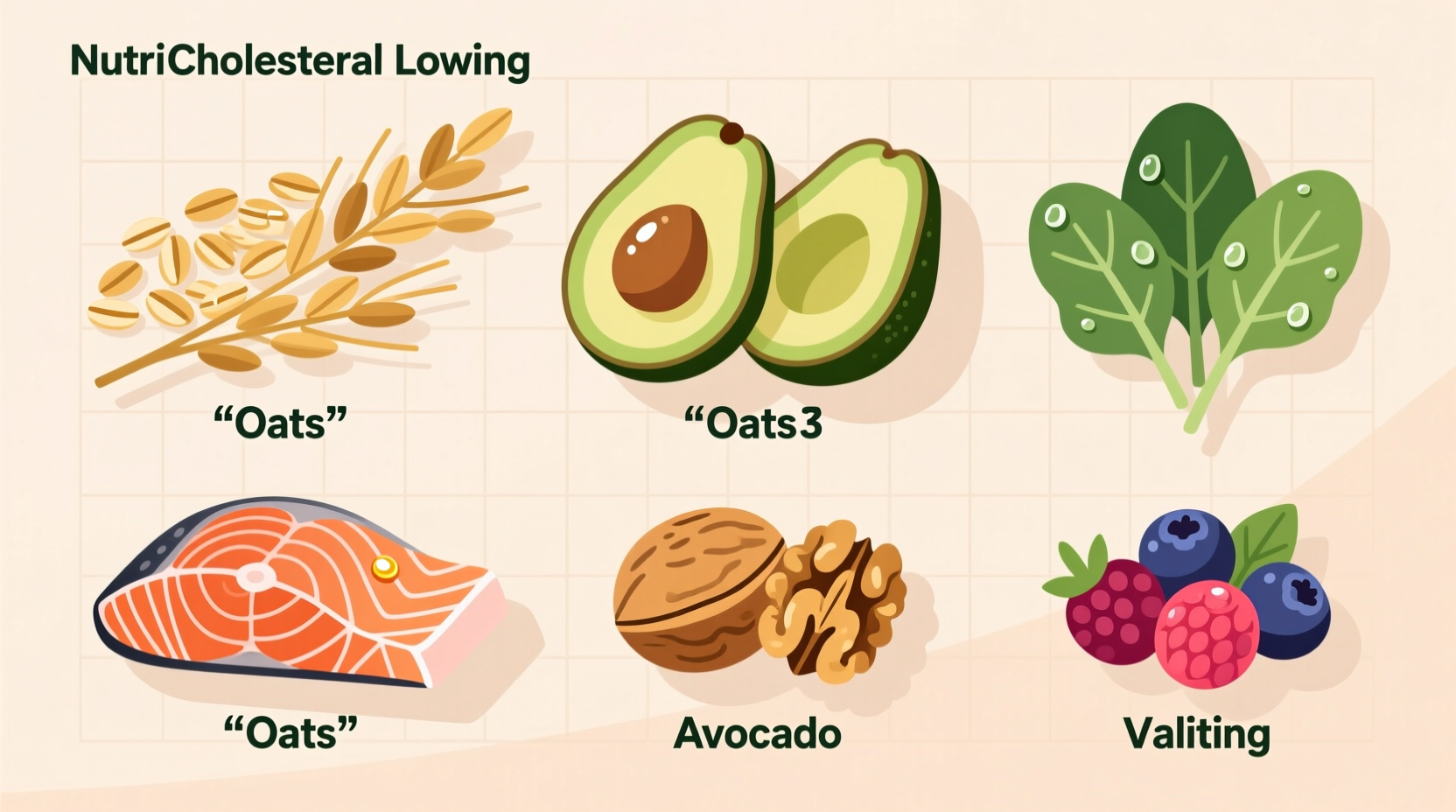Research shows these foods effectively lower cholesterol: oats and barley (soluble fiber), fatty fish like salmon (omega-3s), walnuts and almonds, avocado, olive oil, beans and lentils, and berries. Eating just 5-10 grams of soluble fiber daily can reduce LDL cholesterol by 5-10% within 4-6 weeks when combined with other heart-healthy choices.
Discover exactly which foods work best, how much to eat, and practical ways to incorporate them into your daily routine. This evidence-based guide cuts through the confusion to deliver actionable dietary strategies backed by leading health institutions.
Understanding How Food Impacts Your Cholesterol
Cholesterol management isn't just about avoiding certain foods—it's about actively incorporating specific nutrients that help your body process and eliminate excess cholesterol. The American Heart Association confirms that dietary changes can lower LDL ("bad") cholesterol by 10-15% without medication when implemented consistently.
Two key mechanisms make certain foods effective:
- Soluble fiber binds to cholesterol in your digestive system, preventing absorption
- Healthy fats replace saturated fats and improve your overall lipid profile
Unlike quick-fix solutions, these dietary changes create sustainable improvements in your cardiovascular health. The National Institutes of Health notes that consistent dietary patterns matter more than occasional "superfood" consumption.
Top Cholesterol-Lowering Foods and How to Use Them
| Food | Key Compound | Effective Daily Amount | Time to See Results |
|---|---|---|---|
| Oats and barley | Soluble fiber (beta-glucan) | 3 grams | 4-6 weeks |
| Fatty fish | Omega-3 fatty acids | 2 servings/week | 8-12 weeks |
| Walnuts | Polyunsaturated fats | 1.5 ounces (24 halves) | 4-8 weeks |
| Olive oil | Monounsaturated fats | 2 tablespoons | 6-12 weeks |
| Beans and lentils | Soluble fiber | 1/2 cup cooked | 4-6 weeks |
This evidence-based comparison shows the most effective cholesterol-lowering foods according to clinical research from the American Heart Association and National Institutes of Health. Note that individual results vary based on overall diet and health status.
Oats and Whole Grains: The Fiber Foundation
Starting your day with oats provides beta-glucan, a specific type of soluble fiber proven to reduce LDL cholesterol. Research published in the American Journal of Clinical Nutrition shows that consuming just 3 grams of oat beta-glucan daily lowers LDL by 5-10%.
Practical implementation:
- Choose steel-cut or old-fashioned oats (not instant varieties with added sugar)
- Add chia seeds or flaxseed for extra fiber boost
- Cook oats with unsweetened almond milk instead of water
- Try barley in soups and salads for variety
Fatty Fish: Omega-3 Powerhouse
Fatty fish like salmon, mackerel, and sardines contain EPA and DHA omega-3 fatty acids that reduce triglycerides and improve overall cholesterol profiles. The FDA recommends two 3.5-ounce servings weekly for cardiovascular benefits.
Pro tip: If you don't eat fish, consider algae-based omega-3 supplements after consulting your healthcare provider. While not as effective as whole food sources, they provide a vegetarian alternative supported by Mayo Clinic research.

Nuts: The Heart-Healthy Snack
Walnuts and almonds stand out for cholesterol management. A landmark study in the Journal of the American College of Cardiology found that eating 1.5 ounces of walnuts daily reduced LDL by 4.3 mg/dL in just eight weeks.
Avoid common mistakes:
- Choose raw or dry-roasted varieties without added oil or salt
- Measure portions—nuts are calorie-dense despite health benefits
- Store in the refrigerator to prevent rancidity
- Combine with berries for antioxidant synergy
Creating Your Cholesterol-Lowering Meal Plan
Knowing which foods help is just the beginning. The real impact comes from how you combine and incorporate them into your daily routine.
Sample Day of Cholesterol-Friendly Eating
- Breakfast: Oatmeal with sliced banana and 1 tablespoon ground flaxseed
- Lunch: Lentil soup with side salad dressed in olive oil and lemon
- Snack: Small handful of walnuts with blueberries
- Dinner: Baked salmon with roasted Brussels sprouts and quinoa
This meal pattern delivers approximately 10 grams of soluble fiber and optimal omega-3 intake. The Harvard T.H. Chan School of Public Health confirms this approach aligns with their revised dietary guidelines for cardiovascular health.
Important Considerations and Limitations
While dietary changes significantly impact cholesterol levels, certain factors require medical attention:
- Genetic conditions like familial hypercholesterolemia need medication alongside diet
- Individual responses vary—some people see dramatic improvements while others need additional interventions
- Dietary changes typically take 4-12 weeks to show measurable results in blood tests
- Always consult your healthcare provider before making significant dietary changes if you have existing health conditions
The Centers for Disease Control emphasizes that dietary approaches work best as part of a comprehensive heart health strategy including regular exercise and avoiding tobacco.
Making Sustainable Changes That Last
Short-term dietary overhauls rarely succeed. Instead, focus on these practical strategies for lasting results:
- Start with one change per week (e.g., replace butter with olive oil)
- Track your meals using a simple journal to identify patterns
- Find healthy versions of your favorite dishes rather than eliminating them
- Involve family members to create supportive eating environments
Research from the National Lipid Association shows that gradual implementation increases long-term adherence by 73% compared to drastic dietary changes. Remember that consistency matters more than perfection—aim for progress, not perfection.











 浙公网安备
33010002000092号
浙公网安备
33010002000092号 浙B2-20120091-4
浙B2-20120091-4